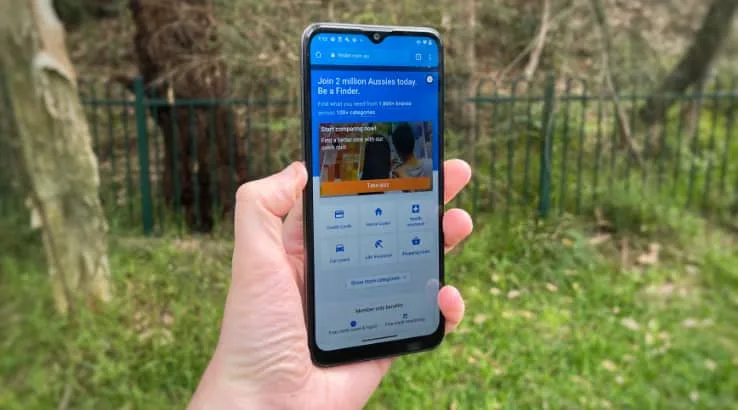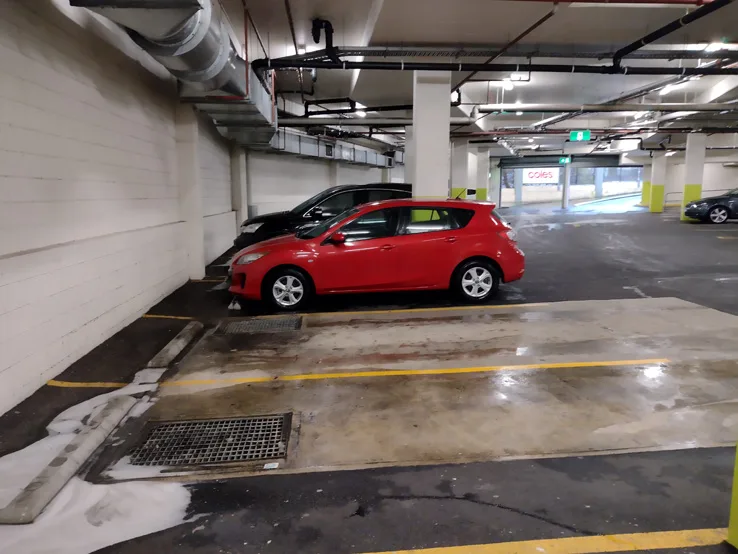Motorola Moto G30 review: Flagship budget phone outclassed by its siblings

-
- Battery Score
4
- Camera Score
3.5
- Design Score
3.5
- Performance Score
4
- Battery Score
4
Summary
Quick Verdict: The Motorola Moto G30 is a serviceable budget handset, but if you’re in the market for a budget Motorola phone, save a few bucks and buy the Moto G10 instead.
- 90Hz capable display
- Good overall battery life
- USB C charging
- Camera isn’t a huge jump from the cheaper Moto G10
- 4GB RAM hampers performance
Details
Pricing & Availability
| RRP | $0 |
| Launch date | 2021-03 |
Most of Motorola's presence in the local market is in the budget space, so while the Motorola Razr 5G is technically the company's flagship phone, the reality is that so few people will buy one of those that effectively that plaudit falls to the Motorola Moto G30.
It's basically what happens when you take the core recipe for the well-received Motorola Moto G10 and upgrade a few key specifications. In theory, that's a flagship phone, but when you add in the reality of operation in the budget space, it doesn't quite add up to upgrades worth getting all that excited about.
Design
Design
- Choice of two colour tones
- 90Hz capable display, but only 720p capable
- Google Assistant and power buttons are easily confused

The Motorola Moto G30 is a mid-sized budget phone, measuring in at 165.22x75.73x9.14mm with a carrying weight of 197 grams, not including the bundled clear plastic case that's so typical of most budget phones these days. That's not a complaint, mind you, because everyone should use phone cases, even on lower-cost handsets.
In Australia, Motorola sells the Motorola Moto G30 in two colour choices. You can pick between "Phantom Black" as tested, or "Pastel Sky", which is a pink hued handset. Not that the Phantom Black is just a plain black plastic, because it's got a silver/purple sheen to it to keep it interesting.
All of the Motorola Moto G30's controls sit on the right hand side, and just like the lower cost G10 model, you get power, volume and Google Assistant buttons to tap as you see fit. Just like the G10 too, the odds are very good that you'll hit the wrong button when you want power or the assistant more than once. While many do like having a physical assistant button on phones, distinct placement can help a lot in making them easier to use.
The Motorola Moto G30's "premium" status relative to the other Motorola 2021 handsets is affirmed via its display screen. It's a 6.5-inch 1600x720 pixel display, which matches up to the G10, save for the fact that it supports up to 90Hz refresh rates. Higher refresh rates are still very uncommon in the budget phone space, so it's nice to see, although a little odd on a phone that is otherwise veering into low resolution territory compared to some alternatives.
One nice touch here is that while by default the Motorola Moto G30 will pick refresh rates automatically, you can choose to drop it into 60Hz only mode or 90Hz only mode if you want more battery endurance (more on that later) or slicker screen animation all of the time.
The Motorola Moto G30 doesn't stray too far from what we've seen out of Motorola of late in a design sense. Naturally, there's a Motorola Batwing logo on the back of the phone that also serves as the location of its fingerprint sensor.
Camera
Camera
- Camera flexibility, but results aren't notably better than the cheaper G10

The other area where the Motorola Moto G30 gets an on-paper advantage over the lower cost G10 is in the camera sensor array. At the front, you get a 13MP f/2.2 sensor for selfie purposes, which is fine, albeit unremarkable.
It's at the back of the Moto G30 where all the action happens. That's where you'll find a primary 64MP f/1.7 sensor, 8MP f/2.2 ultrawide 118° sensor, 2MP f/2.4 macro sensor and finally a 2MP f/2.4 depth sensor.
That 64MP sensor is an uptick from the 48MP sensor found in the cheaper G10, and I was hoping to see some real difference in the way and style of the Motorola Moto G30's shooting as a result.
However, that's not what happened, because by and large the Motorola Moto G30's output wasn't substantially better than the Motorola Moto G10's once you get it away from its low resolution display. They're both quite capable cameras for most purposes, although typical hard subjects like fast motion or low light will break them pretty quickly as you'd expect at this price range.
You don't even particularly get a much better experience with zoom through that 64MP sensor, even though Motorola has got a little more breathing room for digital interpolation as a result. Moving closer to your subject, or simply taking your shot and cropping later in a dedicated photo editor will generally result in a more pleasing photographic outcome.
What that adds up to is a feature that on paper looks like it's the best of its class for Motorola phones, but in reality, isn't substantially better – and that's a problem for a phone that commands a higher asking price.
Performance
Performance
- Snapdragon 662 but only 4GB RAM
- 128GB storage is a nice inclusion
- Android 11 with only a few tweaks

Keeping with the idea that the Motorola Moto G30 is a souped up G10, it also gets a specification bump under the hood, with a Qualcomm Snapdragon 662 SoC matched up with 4GB of RAM running the whole show. It's an interesting mix that performs adequately, but rarely at a level where I felt like it was considerably faster or better than the already impressive Motorola Moto G10.
You can see that in benchmark terms as well. Despite the processor being a faster model, there's not much between the Motorola Moto G30 and Moto G10, and both lag behind other phones you could grab for the Moto G30's asking price. Here's how they compare using Geekbench 5's CPU test:
The Motorola Moto G30 and Moto G10 share the same Adreno 610 GPU, but here the Moto G30 does step up a little in benchmark terms. Here's how it compares using 3DMark's Slingshot Extreme GPU test; neither phone is equipped well enough to handle the newer Wild Life test.
What that means in practical day to day use is that the Motorola Moto G30 is fine for most budget users with moderate expectations, but not really a standout in its class. Push heavier duty games or more complex apps at it and you'll see a little stuttering in performance, even with that 90Hz display in play.
Motorola's history with upgrades to its phones has been one of slow and steady evolution, rather than rapid upgrades, so the Moto G30 will most likely be sitting on its core Android 11 OS for a while. If you're fussed about quick Android updates in this price bracket, Nokia remains the brand to look at.
However, the Motorola approach to Android is otherwise very similar to that of Nokia, with only a few light tweaks around Android 11, such as motion-controlled Moto actions (twisting to fast launch the camera, chopping for the flashlight) sitting outside the usual and expected Android norms. I'm a big fan of Android makers largely leaving Android alone rather than confusingly rewriting it, and this is something Motorola largely gets right in my view.
Battery life
Battery life
- 5,000mAh battery performs well given 90Hz screen
- 20W charging is faster than other Moto phones

The Motorola Moto G30 affirms its position at the top of Motorola's budget range in Australia with power specifications that are just fractionally better than those of the lower cost devices. They're nearly all equipped with 5,000mAh batteries, and that's the case for the Motorola Moto G30 as well, but it benefits from 20W charging out of the box, a little more rapid than is the case for the G10 or E7 handsets.
The challenge for the Motorola Moto G30 is its 90Hz display screen, because extra refresh rates equals more strain on battery life.
To test this, I ran the Motorola Moto G30 through our standard battery test, looping a full HD YouTube video at maximum brightness and moderate volume for an hour from a fully charged state. That test was run at both forced 60Hz and 90Hz display rates, but the Motorola Moto G30 showed its endurance with the same essential battery performance in either state. Video playback is an area where high refresh rates can really make a difference in your enjoyment of media, and the Motorola Moto G30 fell exactly where I'd expect a phone in this budget range to fall. Here's how it compared to phones in the same price range and other Motorola handsets:
Motorola had rather dragged its feet on bringing USB C to its lower cost handsets, but it's now standard across the range. That means it's much easier to plug in the power when the Motorola Moto G30 runs low.
Should you buy the Motorola Moto G30?
- Buy it if you must have Motorola's 'flagship' budget phone.
- Don't buy it if you want the best value Motorola phone available right now.
The Motorola Moto G30 doesn't do too much wrong for a budget phone. That 90Hz display is nice, battery endurance is good and it's capable enough for everyday smartphone apps and even games at lower settings without substantial fuss.
The problem is that the Moto G10 exists, and it's cheaper while dropping only a few of those key selling points. It's a tough call to make to jump up the price bracket just for a refresh rate, because ultimately that's the area you'd notice the most, and even then it's not 90Hz at its best thanks to the limitations of that 720p display.
Pricing and availability
Specifications
Display
Camera
Physical Dimensions
Connectivity
Power, storage and battery
Device features
Images: Alex Kidman
More Finder reviews
- Samsung Galaxy S25 Ultra review – Still an Android powerhouse
- iPhone 16 and 16 Plus review – Closing the gap
- iPhone 16 Pro and 16 Pro Max review – Shockingly good battery life
- Google Pixel 9 Pro XL review – Fantastic phone, even better cameras
- Samsung Galaxy Z Flip 6 review: Great phone held back by price
Alex Finder
Senior editor
You are about to post a question on finder.com.au:
- Do not enter personal information (eg. surname, phone number, bank details) as your question will be made public
- finder.com.au is a financial comparison and information service, not a bank or product provider
- We cannot provide you with personal advice or recommendations
- Your answer might already be waiting – check previous questions below to see if yours has already been asked
Finder only provides general advice and factual information, so consider your own circumstances, or seek advice before you decide to act on our content. By submitting a question, you're accepting our Terms Of Service and Finder Group Privacy & Cookies Policy.
This site is protected by reCAPTCHA and the Privacy Policy and Terms of Service apply.







